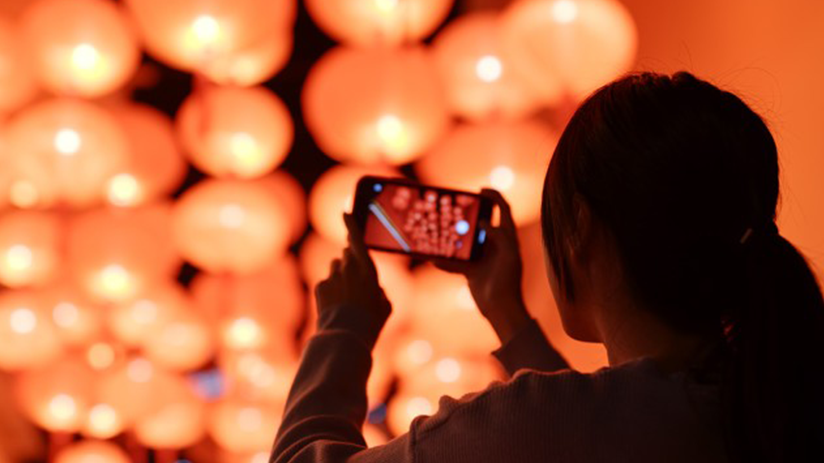Are you tired of clicking through the same carousel of images after every fundraising event – the smiling group photo in front of the media backdrop, the shot of the dinner table settings, or the packed room shot? Me too.
It’s time to step out of the routine and think outside the viewfinder. By employing clever visual storytelling strategies, nonprofits like yours can create compelling narratives that not only document the event but also captivate audiences, draw in support, and truly set you apart from the crowd. And the best part? You don’t need a Hollywood budget or a pro photographer to pull it off.
Start With A Story
Behind every successful event, there’s a story. It might be about the community rallying to support a cause, a guest speaker who overcame adversity, or the hardworking volunteers who made it all possible. Capture these stories in your visuals. Include images that evoke emotion and encapsulate these personal journeys.
Tip: Have a volunteer ‘story scout’ at your event. Equip them with a smartphone and instructions to capture the stories unfolding throughout the day.
Embrace Authenticity
Polished, posed photos have their place, but candid, in-the-moment snaps often tell a more compelling story. Encourage volunteers and attendees to snap and share their perspectives on social media using a dedicated event hashtag. This user-generated content not only gives you an array of images to use, but it also promotes engagement and reaches a wider network.
Tip: Create an Instagram wall where guests can view real-time uploads. It can serve as both a fun activity and a conversation starter.
Use Detail Shots For Impact
Close-ups can offer a fresh perspective. For instance, a close-up of a bidder’s excited face during an auction or a golfer’s concentration before a swing can make a more powerful statement than the typical wide-angle shot. Look for hands being held, tears of joy, or a messy table post-event – these are all story-driven moments waiting to be captured.
Tip: There’s a fine line between a close-up and and violating someone’s personal space. When in doubt, ask permission. More often than not, they’ll be okay with it. Of course, a camera with a zoom lens works here if you have the budget.
Leverage Before And After Shots
Use a timeline approach to document the event journey. Capture the empty room before setup, the busy volunteers during, and the satisfied team after. This ‘before, during, and after’ sequence gives a comprehensive picture of the event, showcasing the hard work put in by all involved.
Tip: Assign one person to be in charge of this timeline photography. They’ll ensure nothing is missed in the hustle and bustle.
Use Captions to Amplify Impact
Photos and videos tell the story, but well-crafted captions can make it resonate. When posting images online, use the caption space to share insights, anecdotes, or quotes from the day that complement the visual.
Tip: Collect quotes from attendees, speakers, and volunteers during the event. This can be as easy as having a volunteer with a notepad, asking for a memorable quote about the day.
Utilize Simple Video Techniques
Videos can be a game-changer. Short clips, interviews, or a montage of the event can offer a dynamic perspective. You don’t need professional equipment; today’s smartphones can do the job perfectly well.
Tip: Consider using free editing apps to polish your clips and add effects. Apps like iMovie or CapCut are user-friendly and offer plenty of features.
Play with Perspectives
Change the perspective of your shots. A picture taken from a low angle can make your event seem grander. A high-angle shot can showcase the scale of your event. Play around with different perspectives to add a unique touch to your visuals.
Tip: Use a smartphone or a small step ladder to take high-angle shots. For low-angle shots, get close to the ground and turn your camera upside down.
Showcase Behind-the-Scenes
People love seeing what goes on behind the curtain. This could include volunteers setting up, the cooks preparing the food, or speakers rehearsing their talks. These images can make your audience feel like insiders, enhancing their connection with your organization.
Tip: Allocate one team member to capture these exclusive behind-the-scenes moments. (Sensing a theme here?)
Experiment with Black & White Images
A well-chosen black and white image can be incredibly powerful and emotional. It can highlight contrasts, add depth and help certain elements stand out. It is a popular technique with wedding photographers. Consider switching some of your pictures to black and white for a dramatic effect.
Tip: Many smartphone cameras have a built-in black and white mode. Alternatively, you can edit the photos later using simple apps.
Light Matters
Good lighting can make or break a photo. Natural light is the best light source, but if your event is indoors or in the evening, make sure the areas you’ll be photographing are well lit.
Tip: Practice taking photos in different lighting conditions to understand your camera’s limitations and capabilities.
Encourage Selfies
Selfies may seem trivial, but they can capture the fun and energy of your event. Encourage attendees, speakers, and volunteers to take selfies and share on their social media using your event hashtag.
Tip: Set up a selfie station with props related to your cause to encourage more people to snap a photo.
Visual storytelling is about capturing the essence and the emotion of your event. It’s about moving beyond the staged and predictable to the candid and powerful. With these tips, your nonprofit can breathe new life into its event documentation, all without breaking the bank. The next time you plan an event, remember – it’s not just about recording what’s happening. It’s about telling a story that resonates, engages, and inspires.
Mission Forward
Mission Forward is a weekly LinkedIn Newsletter written by Paul Durban with tools, tips and tricks to help nonprofits reach their goals. Subscribe to the newsletter on LinkedIn.

